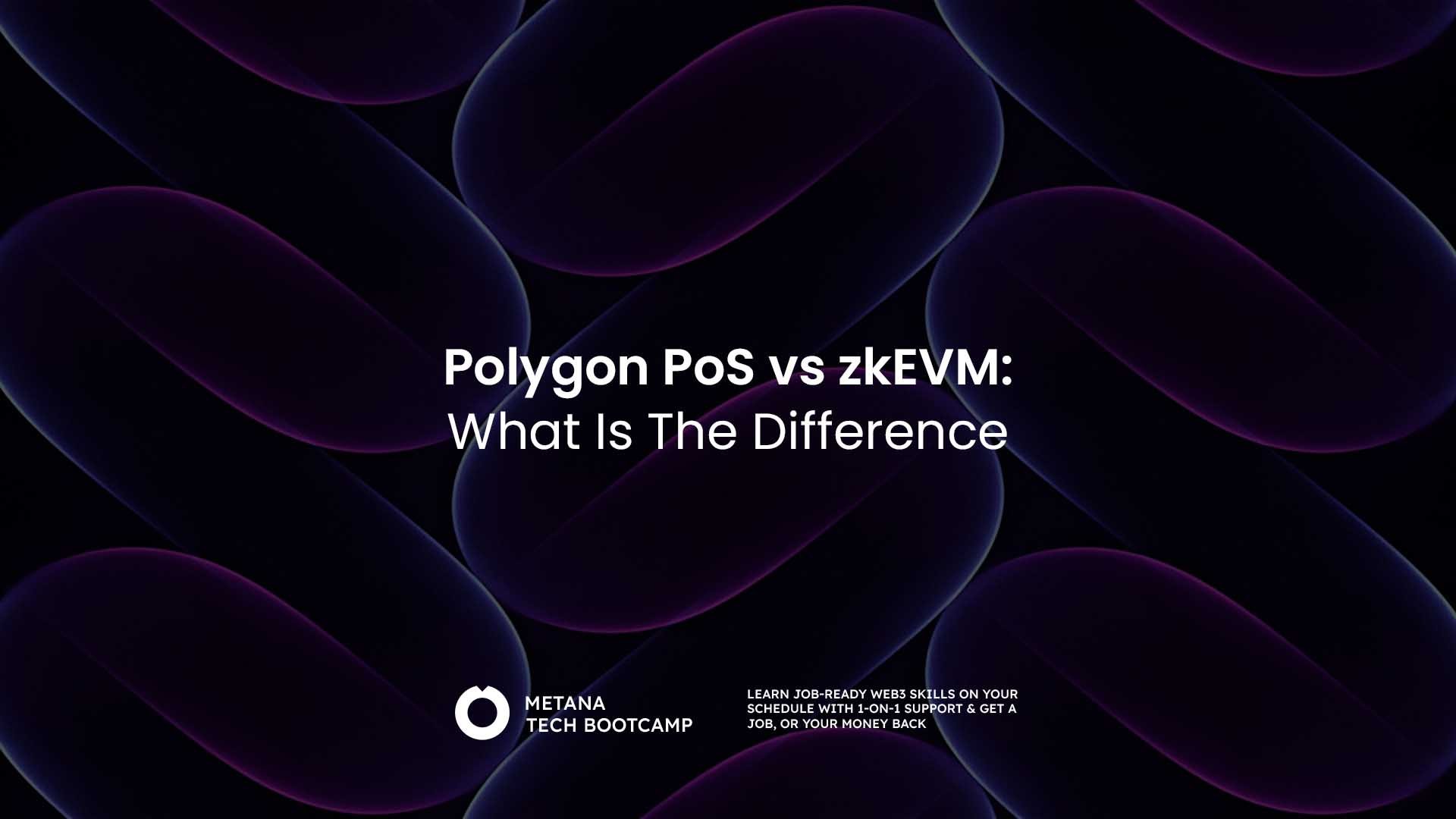
Polygon PoS vs zkEVM: Key Differences in Ethereum Scaling Solutions

Polygon PoS and zkEVM comparison
Polygon offers two distinct scaling solutions for Ethereum: Proof of Stake (PoS) and Zero-Knowledge Ethereum Virtual Machine (zkEVM). These solutions address Ethereum's scalability challenges while maintaining different approaches to security and efficiency.
Polygon PoS A Layer-2 scaling solution that uses a Proof of Stake consensus mechanism to validate transactions. It offers:
- Fast transactions (2 seconds block time)
- Low transaction fees (< $0.01)
- High throughput (7,000+ TPS)
- Mature ecosystem with many dApps
- EVM compatibility for easy deployment
Polygon zkEVM A zero-knowledge rollup solution that provides:
- Enhanced security through mathematical proofs
- Full Ethereum compatibility
- Native support for existing Ethereum tools
- Stronger decentralization
- Lower cost than Ethereum mainnet while maintaining its security
Key Differences
- Security Model:
- PoS: Uses its own validator set
- zkEVM: Inherits Ethereum's security through ZK proofs
- Transaction Finality:
- PoS: ~30 minutes for full finality
- zkEVM: When batch is proven on Ethereum (~1-3 hours)
- Developer Experience:
- PoS: Established ecosystem, extensive tooling
- zkEVM: Newer but fully EVM-equivalent
- Cost Structure:
- PoS: Very low fees, optimized for frequent transactions
- zkEVM: Higher than PoS but lower than Ethereum mainnet
Choose PoS for applications requiring high throughput and low fees, and zkEVM for those prioritizing security and direct Ethereum compatibility while maintaining reasonable costs.
